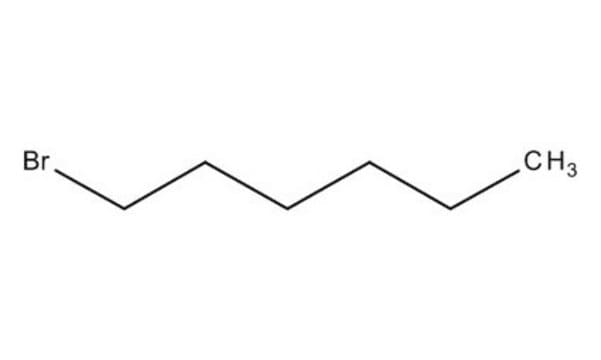398276
Diisopropylether
contains either BHT or hydroquinone as stabilizer, ACS reagent, ≥99.0%
Synonym(e):
Isopropylether
About This Item
Empfohlene Produkte
Qualität
ACS reagent
Qualitätsniveau
Dampfdichte
3.5 (vs air)
Dampfdruck
120 mmHg ( 20 °C)
Assay
≥99.0%
Form
liquid
Selbstzündungstemp.
827 °F
Enthält
either BHT or hydroquinone as stabilizer
Expl.-Gr.
1-21 %, 100 °F
Verunreinigungen
≤0.0007 meq/g Titr. acid
≤0.05% Peroxide (as C6H14O2)
Abdampfrückstand
≤0.01%
Farbe
APHA: ≤25
Brechungsindex
n20/D 1.367 (lit.)
bp
68-69 °C (lit.)
mp (Schmelzpunkt)
−85 °C (lit.)
Dichte
0.725 g/mL at 25 °C (lit.)
SMILES String
CC(C)OC(C)C
InChI
1S/C6H14O/c1-5(2)7-6(3)4/h5-6H,1-4H3
InChIKey
ZAFNJMIOTHYJRJ-UHFFFAOYSA-N
Suchen Sie nach ähnlichen Produkten? Aufrufen Leitfaden zum Produktvergleich
Verwandte Kategorien
Allgemeine Beschreibung
Anwendung
- Resolution of secondary alcohols.
- Enantioselective acylation of 1-phenethylamine.
- Synthesis of aliphatic and aromatic cyanohydrins.
Signalwort
Danger
H-Sätze
Gefahreneinstufungen
Flam. Liq. 2 - STOT SE 3
Zielorgane
Central nervous system
Zusätzliche Gefahrenhinweise
Lagerklassenschlüssel
3 - Flammable liquids
WGK
WGK 1
Flammpunkt (°F)
-20.2 °F - closed cup
Flammpunkt (°C)
-29 °C - closed cup
Analysenzertifikate (COA)
Suchen Sie nach Analysenzertifikate (COA), indem Sie die Lot-/Chargennummer des Produkts eingeben. Lot- und Chargennummern sind auf dem Produktetikett hinter den Wörtern ‘Lot’ oder ‘Batch’ (Lot oder Charge) zu finden.
Besitzen Sie dieses Produkt bereits?
In der Dokumentenbibliothek finden Sie die Dokumentation zu den Produkten, die Sie kürzlich erworben haben.
Kunden haben sich ebenfalls angesehen
Protokolle
A guide to create solvent systems used for the thin-layer chromatography assay of Novabiochem products.
Unser Team von Wissenschaftlern verfügt über Erfahrung in allen Forschungsbereichen einschließlich Life Science, Materialwissenschaften, chemischer Synthese, Chromatographie, Analytik und vielen mehr..
Setzen Sie sich mit dem technischen Dienst in Verbindung.










